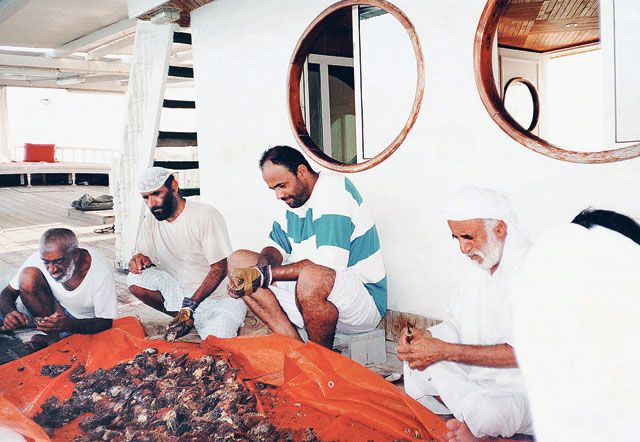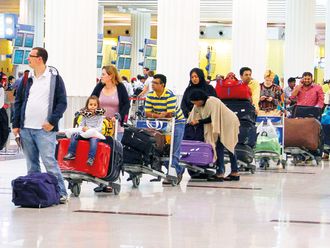Dubai: The UAE is rich with traditional jobs that older generations used to count on for their main source of living, such as drum making, pearl diving, building and manufacturing, such as woven mats.
Performing such traditional jobs needed great effort and cooperation from everyone and authentic tools were used to cope with the winter months and excessive humidity of summer.
Nowadays, the UAE community is very proud of their past and its recognisable achievements and traditional wares are highly protected and exhibited in museums in order to educate others on how challenging life was and how strong-minded the people of the UAE were.
Drum making
The Ziziphus tree (Ceder in Arabic) is considered a primary material for drum making. Wood is taken from a big tree trunk and the other additions or small branches are cut off. The sides and edges exceeding the required length are also removed.
The trunk is then carved using a special tool called "al manqar" and is softened from the inside in order to take a cylindrical shape. It is left exposed to the sun for one week and is worked on from the outside and shaped in the middle.
It is also decorated and painted with "al hall", which is a solution that gives the wood a brown colour. After that, leather (al shann) is fixed on the two ends of the drum which is hung with ropes.
Pearl diving
The diver or "al ghawwass," according to Emirati pronunciation, gets off the ship and stays on the water's surface to put on a nose clip (al fatam) to avoid breathing and swallowing water. He then ties a 4-7 kilogramme weight to his leg to accelerate his descent to the sea bed where he then unties the weight to be pulled up by the crew with a rope (al zabeen). The "dabeen" is a basket made from ropes. The diver hangs it around his neck to collect oyster shells as the diver is tied to a rope called the "al hadaa."
The diver then collects the shells and puts them in "al dabeen" and when the basket is full or the diver has respiration problems he shakes "al hadaa" with his leg so he can be pulled out.
Construction
"Al areesh," an Emirati palm tree hut, is the summer home of the UAE people. It is made out of palm branches and fronds. The work begins by building the cornerstones of "al areesh." Then the pillars (al yadoo) of the home are fixed and made of the trunks of palm and other trees. The pillars are linked with the "al mazfin al daan" — a piece made of palm branches constituting the walls. "Al mazfin" is also used for the roof. Another piece called "al radda" is put on the home's façade.
Manufacturing
Al Hasseer, or woven mats, are made of palm fronds (al seffa). The fronds are soaked in water to make them flexible for the weaving process. Women weave the strips of the fronds, placing the first piece under their feet when they start linking the first strings of "seffa" respectively. The linking work will continue until 20 are done and then cut vertically with the knife. The end of a "seffa" is twisted and the edges of "al hasseer" are sewn with string.








